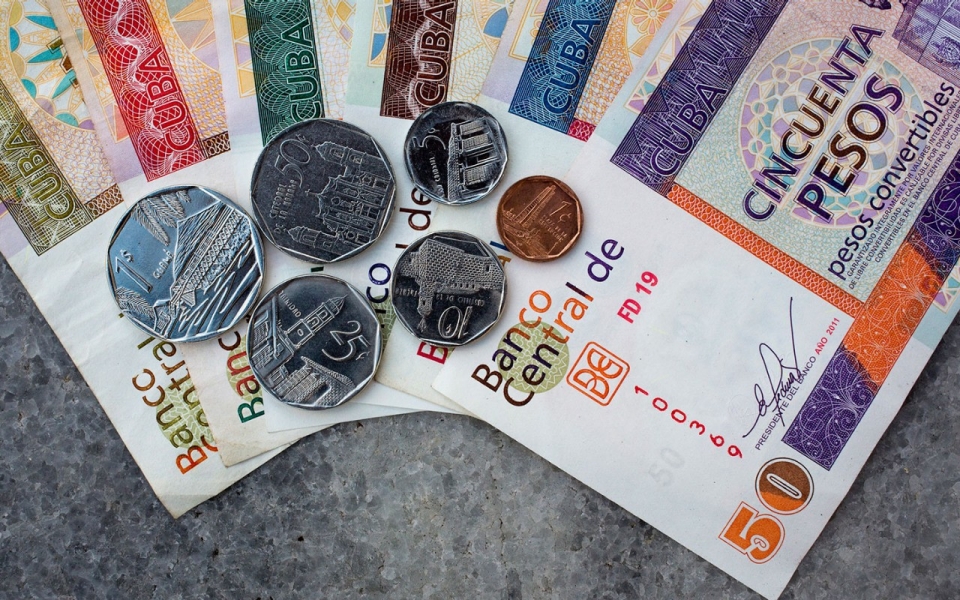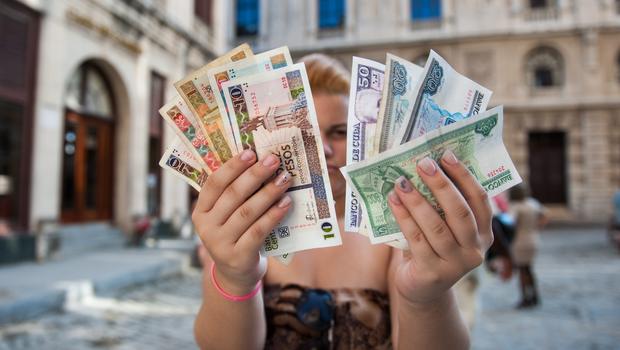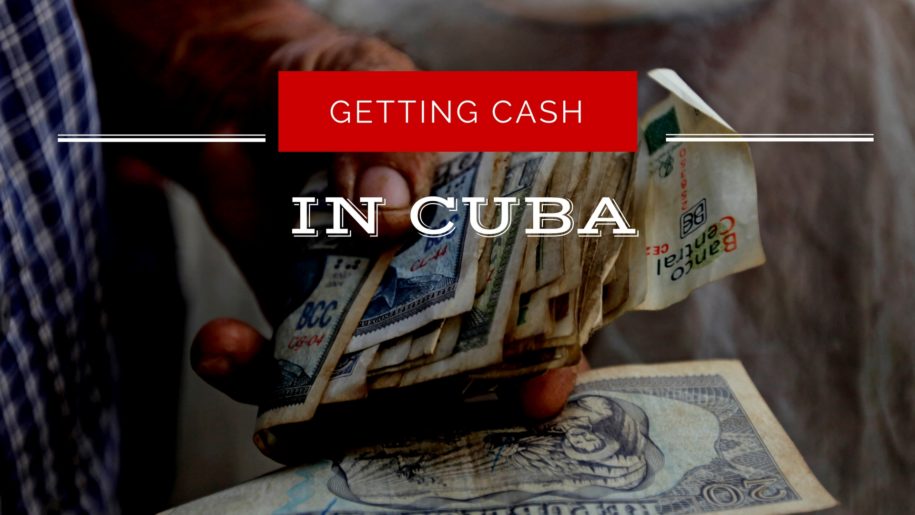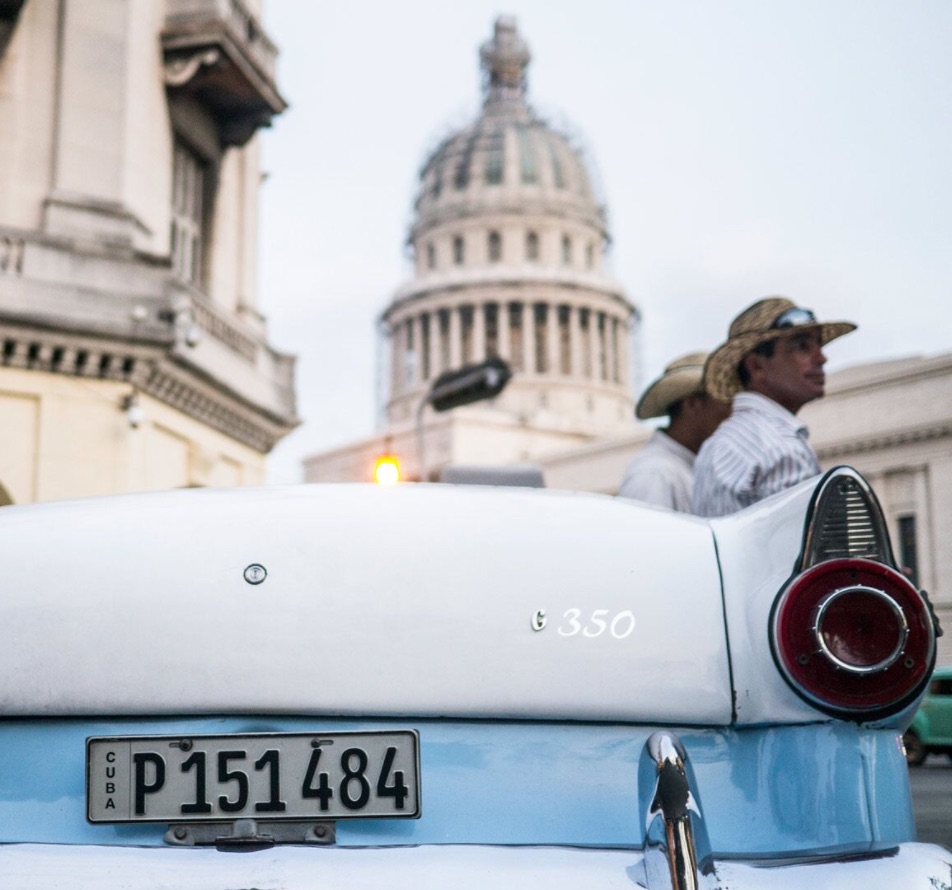It’s fun to look at the various forms of “currency” in use when you travel around to different countries. In German supermarkets you will see people carrying masses of bottles to the bottle machine that can be found in the back. They feed the bottles into a tube, which scans them and then prints out a docket, which can be exchanged for cash.
Plastic bottles are worth 25 cents each, so after a party you can make enough for your weekly grocery shopping! Over the border in Denmark, many people don’t use cash or cards for shopping. They use a smartphone app that immediately transfers the requested amount to the business, whether you’re buying a new shirt or a hamburger. And then there’s the art of getting cash in Cuba. It’s an experience that you will quickly get used to, no matter how odd you might find it in its initial stages. Managing your money while you’re on the island is also something of an artform, as we describe below!
Is Your Credit or Debit Card Going to Work At All?

Some larger businesses will accept credit and debit cards, but the majority of your purchases will be made using cash. And when we say ‘some large businesses’, we basically mean the big hotels in Havana and other big cities.
As a result, you need to ensure that getting cash in Cuba is even going to be possible. But why wouldn’t it be? It’s not all that complicated in most places – you go to the cash machine and withdraw what you need. Of course, this only works in foreign countries because you’re able to access the funds that are held in the bank account situated in your home country. But in Cuba, this is not possible when those funds are held in a US bank account. It’s a remnant of the trade embargo imposed on Cuba and means that your card isn’t going to work if issued by any US provider – the general idea of which is to prevent US financial assistance to Cuba.
So you were merely trying to fund a night of salsa dancing and mojito drinking… There have been instances of Americans attempting to withdraw cash in Cuba and having their accounts temporarily suspended until they can provide a satisfactory explanation (although “I wasn’t aware of this rule” is likely to be explanation enough). This extends to banks in other countries too, if they happen to be heavily affiliated with a US bank, or US card companies such as American Expres.. A key component of planning for getting cash in Cuba is therefore to first ask your bank or financial institution for confirmation as to whether or not your card will work while in Cuba.
They can give you a definitive yes or no. In the instances where it’s going to be a decisive no, then you need to come up with a workaround. The most straightforward solution is to obtain a prepaid money card (a lot like the travellers cheques of old) from an issuer whose card will be accepted in Cuba (so you must confirm this). You simply load the card with cash from your account, and you can then transfer funds from your account to the card throughout your stay, as needed. This is feasible no matter which bank the funds are transferred from.
And what about online payment systems such as Paypal or Apple Pay? We’d love to be more positive, but don’t even think about it! Stores are simple not set up for such payment systems, and even if they were, internet connectivity is such that it can never be guaranteed either!
Upon Arrival in Cuba
Cuba has a closed currency system, which means it won’t be possible to get Cuban money in your home country. When it comes to cash, as a visitor or tourist, you’ll primarily be using the Cuban Convertible Peso, or CUC, one of two currencies used on the island. The other is the CUP, or moneda nacional, aimed solely at residents of the island, although you may come across it in your change from time to time.
The inability to get Cuban Convertible Pesos before arrival means you’ll want to have a bit of money ready to exchange upon arrival in Cuba, in case there are any issues locating a cash machine. You wouldn’t want to land in Havana only to find your stuck without any cash to even get to your accommodation. Nightmare! You can generally find cash machines or CADECA’s (money exchange desks) at all major airports, and this should perhaps be your first port of call after you clear customs.
When it comes to what currency to bring to Cuba for exchange, don’t bother with US dollars. These will readily be exchanged for sure, but the rate will not be in your favour. There is a significant surcharge for exchanging US dollars of 10% – another remnant of that US trade embargo. Stick to Canadian dollars, British pounds, and EU euros, even if that means having to convert US dollars to the Euro’s before arriving on the island. Smaller currencies (such as Australian dollars or New Zealand dollars) might not be accepted at all if they’re not recognised, so leave these behind too if you can.
Bringing hard currencies for conversion when in Cuba is a balancing act. You need to balance the worry of carrying around large amounts of money, with the knowledge that ATMs aren’t that easy to find. Where you sit on this scale is pretty much down to personal choice, and well worth considering carefully long before your arrival in the country.
Tips for Getting Cash in Cuba

Getting extra cash in Cuba requires a very simple act – asking where to go. You are used to having an ATM within easy reach in your own country, and this is indeed true in most countries you’ll end up visiting. It might not be your own bank’s ATM, and so you might be subjected to a surcharge, but still, you will easily and immediately be able to have ready cash in your hand. This is unfortunately not the case in Cuba, where ATMs seem to be rather thin on the ground. At the airport you would have exchanged cash or used the ATM there, obtaining enough money for the taxi ride into the city to your accommodation, and enough for your first evening. When checking in at your accommodation, ask about the location of the nearest ATM. Ask for directions if necessary.
Please note that ATM’s do not work for MasterCard branded cards, only Visa. If you have a MasterCard you will need to go inside a bank and visit a teller to withdraw funds.
This location is going to be an exceedingly useful piece of information. You don’t want to go out into the city, only to have to search for a spot where you can take money out so you can actually buy things. You might want to get into the habit of going to the ATM first thing in the day to get enough cash to fund that day or the next few days. A daily trip might be necessary if you don’t wish to carry around a large amount of money (and as such, don’t want to withdraw roughly how much will be needed for a few days at a time).
This is not such a bad idea, and while the idea of carrying around a lot of cash might give you some trepidation, it’s really not something to be too concerned about. You must remember that robberies and street crime are rare in Cuba, so your money will be quite safe. You might also want to bring one of those tourist safeguards to Cuba – the hidden money belt.
This is little more than a fabric envelope that is attached to a soft belt and then hidden under your clothes. It’s not entirely necessary, but it might make you feel a little more confident, and will mean you won’t quite have to start each and every day with a trip to the ATM. Whatever you do, try and avoid flashing large amounts of cash (or jewellery) about.
Getting cash in Cuba doesn’t have to be a trauma! Sure, you might be a little more pre-planning than you would in other vacation destinations, but beyond that, getting cash in Cuba really can be as simple as getting cash at home.

